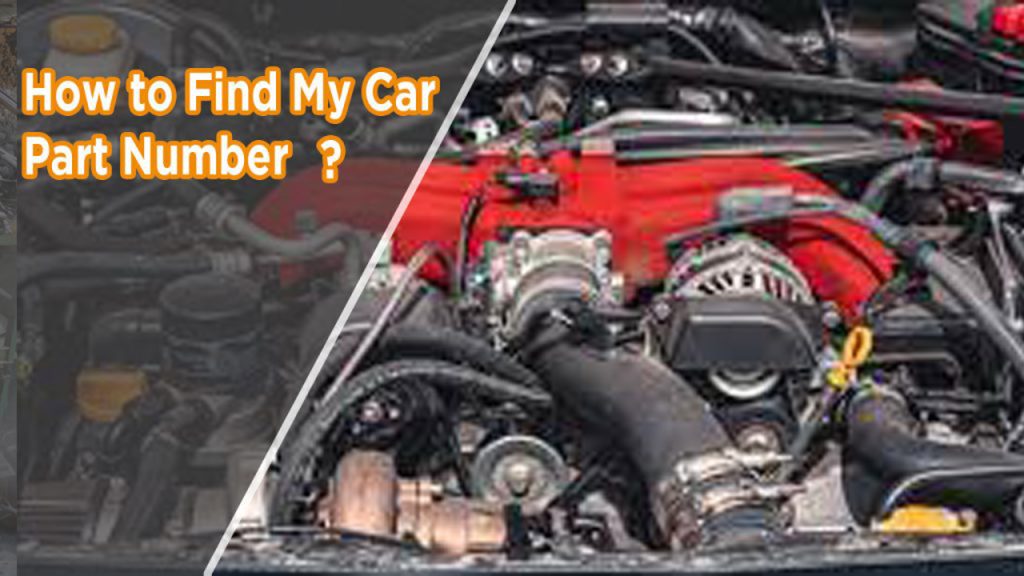If you’ve ever needed to replace a car part, you know how overwhelming it can be to navigate through options and ensure you’re getting the right one. Trust me, I’ve been there more than a few times. One of the most important steps in this process is finding the correct car part number. A part number is essentially the fingerprint of a car component. It ensures you’re buying something that fits your vehicle perfectly and works as intended.

Let’s dive into this topic and explore practical ways to locate your car part number. I’ll break it down in an easy-to-follow manner so that you can tackle this task with confidence.
Why Is the Car Part Number So Important?
The car part number is your guarantee that you’re purchasing the exact component your vehicle needs. Here’s why it matters:
- Avoid Compatibility Issues: Not all car parts are universal. Even small differences can prevent proper fit or function.
- Save Time and Money: Getting the correct part on your first attempt means fewer returns and less frustration.
- Maintain Vehicle Performance: Using the wrong part can lead to performance problems or even damage other components.
Knowing how to find and verify a car part number can save you from a lot of headaches down the road.
Where to Start: Your Owner’s Manual
Your car’s owner’s manual is often the easiest place to begin. It contains detailed information about your vehicle, including the specifications of various components. Look for the section on parts and maintenance—it may include part numbers for items like filters, belts, and bulbs.
While the manual won’t always list every single part, it’s a great starting point for common maintenance components.
Checking the Part Itself
Many car parts have the part number printed, stamped, or engraved directly on them. Here’s how you can locate it:
- Step 1: Identify the Part: Locate the component in your vehicle. This could be anything from a brake pad to a spark plug.
- Step 2: Look for the Label or Marking: Check the surface of the part for a label, stamp, or embossed code.
- Step 3: Clean the Surface if Necessary: Sometimes, dirt or grease can obscure the part number. Use a rag or cleaning solution to wipe it down.
Common places to find part numbers include:
- Engine parts: Cylinder heads, alternators, and belts.
- Exterior parts: Mirrors, lights, and bumpers.
- Interior parts: Dashboard panels, seats, and controls.
Using Online Tools and Databases
The internet is a goldmine for finding car part numbers. Many websites are designed to help you identify parts quickly.
Manufacturer Websites
Most automakers have online catalogs where you can search for parts by entering your vehicle’s details. You’ll typically need:
- The make and model of your car.
- The year of manufacture.
- The trim or engine type (e.g., V6 or V8).
Auto Parts Retailers
Websites like AutoZone, RockAuto, and Advance Auto Parts let you search for parts by entering your vehicle’s information. Once you find the part you need, the part number is usually listed in the description.
VIN Decoding
Your vehicle identification number (VIN) is a powerful tool for finding parts. Enter your VIN on a manufacturer or retailer website, and it’ll pull up a list of compatible parts, including their numbers.
Calling Your Dealership
If you’re stuck, a quick call to your dealership can often solve the problem. Dealers have access to detailed part catalogs and can look up the exact part number for your car. Just have your VIN handy to speed up the process.
Visiting a Local Auto Parts Store
Sometimes, nothing beats in-person help. Bring the part you need to replace (if possible) and your car’s information to a local auto parts store. Their staff can often identify the part number or suggest a compatible replacement.
Using an OBD-II Scanner
For certain electronic components, an OBD-II scanner can help. When connected to your car, it reads error codes from the vehicle’s computer. These codes can point you toward the part causing the issue and sometimes provide the part number.
When the Part Number Isn’t Available
If you can’t find the part number, don’t panic. Here’s what you can do:
- Measure and Compare: For simple parts like hoses or bolts, measure the dimensions and compare them with available options.
- Cross-Reference: Many parts have multiple compatible numbers. Use a cross-reference chart to find equivalent options.
- Ask the Experts: Mechanics and parts professionals can often identify parts based on photos or descriptions.
Tools for Finding Car Part Numbers
| Method | Best For | Key Requirement |
|---|---|---|
| Owner’s Manual | Common maintenance parts | Access to the manual |
| Checking the Part Itself | Visible part numbers | Cleaning tools |
| Online Tools/Databases | Comprehensive searches | Vehicle details (make, model) |
| VIN Lookup | Exact matches | Your VIN number |
| Dealership Help | Manufacturer-specific parts | VIN and car details |
| Auto Parts Store | Quick identification | Sample part or car details |
My Experience with Finding Car Part Numbers
Let me tell you, finding a car part number can sometimes feel like a treasure hunt. I’ve had moments where a quick glance at the part revealed the number, and other times I’ve spent hours scouring websites and catalogs. The key is to stay patient and methodical. Every time I’ve taken the extra step to confirm a part number, it’s paid off with the right fit and no returns.
Conclusion
Finding a car part number might seem daunting at first, but it’s a skill every car owner should know. Whether you’re replacing a simple filter or a more complex component, having the correct part number ensures a smooth and hassle-free repair.
Start with your owner’s manual or the part itself, and don’t hesitate to use online tools, call your dealership, or visit a local store for help. A little effort upfront can save you time, money, and frustration down the road.
Next time you need to replace a car part, you’ll be prepared and confident in finding exactly what you need.
FAQs
What is a car part number?
A car part number is a unique identifier assigned to each component by the manufacturer to ensure compatibility and proper fit.
Can I find a car part number using my VIN?
Yes, your VIN is a powerful tool that can pull up a list of compatible parts for your specific vehicle.
What if my car part doesn’t have a visible number?
If the part number isn’t visible, use measurements, cross-reference charts, or consult a parts professional for assistance.
Do aftermarket parts have the same numbers as OEM parts?
Not always. Aftermarket parts often have different numbers but may cross-reference to the original OEM part.
How can I tell if a part is genuine?
Look for official branding and packaging, or buy directly from the manufacturer or a trusted dealership.


